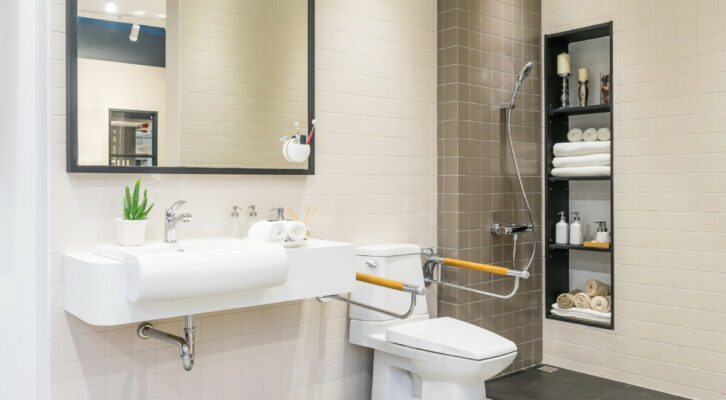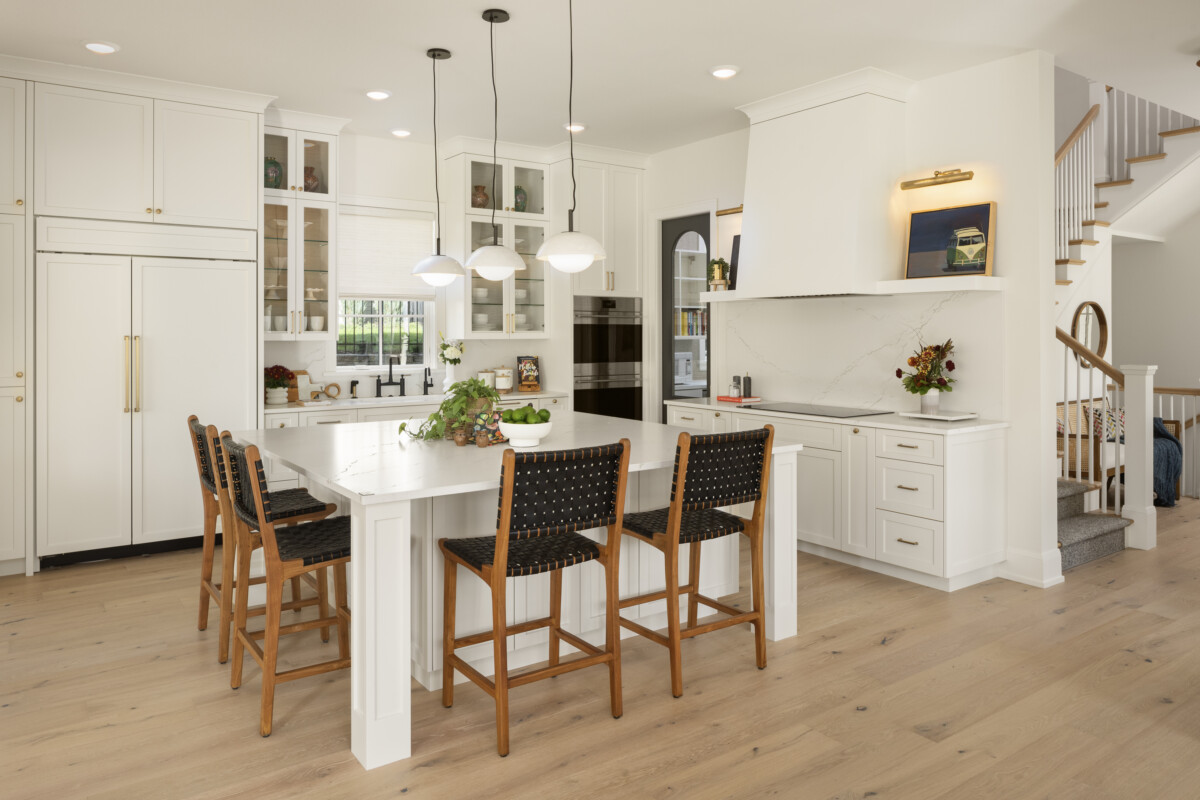Ask the Expert: Andy Gallio with Schluter-Systems North America and Contractor University.
With more than 25 years of experience in the construction industry, Andy Gallio provides instruction to installers as well as architects on the proper usage of the materials necessary in the tile industry at Schluter’s workshops and online training events. He started out in the residential homebuilding trade as a framer and concrete placer. He has had specific training in the field of concrete specification and testing as well as Computer Aided Design (CAD). His experience in all aspects of construction advanced him to a position of writing and implementing scopes of work for subcontractors. Here, Andy answers some common questions about accessible and barrier-free bathrooms.
Q: What are some of the most common challenges you come across related to waterproofing a barrier-free bathroom?
A: When building a curbless shower, the biggest challenge is ensuring a proper slope to the drain to contain the water. Generally, there are three approaches one can take. Either recessing the shower base in the floor, building up the surrounding bathroom floor to the height of the shower base, or creating a ramp into the shower. Once we determine our approach fro creating a flush entrance, waterproofing is the next consideration. As a rule, topically applied waterproofing methods both inside and outside the shower enclosure are the only reliable way to prevent potentially costly failures.
Q: What is the distinction between designing a curbless shower and a barrier-free shower for a client?
A: A curbless shower simply means a shower without a curb. A barrier-free shower is one that is compliant with ADA standards for accessiblity. These requirements consider reach tolerances, dimensions of the shower, seating, placement of grab bars, etc. Basically, a barrier-free shower is one that’s free of any barrier or impediment that could prevent its use by someone with a disability.
Q: What kind of demand have you seen in requests for ADA-compliant, barrier-free bathrooms in residential construction?
A: There is currently a strong demand for curbless showers. Aging-in-place conversations have become very prominent in the construction industry and are a key driver of this demand. Statistics show that the percentage of population above 65 years is growing at a rapid rate. Many people are modifying their homes to avoid transitioning to costly assisted living arrangements. At the same time, we see growing demand for curbless across all age groups because, quite simply, it’s a nice design feature. For example, opening up the bathroom can make them appear larger and minimalist which is the current trend. There are some very creative and beautiful showers going in out there!
Q: When designing a barrier-free shower for a client, what kind of specialized waterproofing is needed, and where is continuous waterproofing required?
A: Because the absence of a curb blurs the line between the so-called wet and dry areas of a bathroom, waterproofing needs to be extended beyond the entry to the shower by a minimum of 12 inches. This requirement is intended to protect the “dry” area of the bathroom from moisture damage resulting from splash and drip-off water. Many of the traditional materials used to construct tiled showers (e.g. pan liners, two-stage clamping ring drains, etc.) cannot provide reliable waterproofing in a curbless environment as they are designed for use with a curb. Fortunately, advances in technology in the form of topically applied sheet membranes, bonding flange drains, and uncoupling membranes allow for reliable waterproofing that will keep the entire bathroom waterproof and vapor tight.
Q: What are some ways barrier-free bathroom environments can be customized while maintaining adherence to ADA standards?
A: The ADA defines clear requirements for seating in a barrier-free shower. Shower seats and benches can be custom designed to adhere to these requirements while enhancing the overall aesthetic of the shower. Moreover, tiled benches can be easier to clean than folding style seats with hinges.
Adding niches inside the shower provide convenient storage for shampoos and soap and can be positioned in accordance with the reach tolerances defined by the ADA.
Customized cantilevered vanities are another key element of a barrier-free bathroom as they create the knee space required for wheelchair access. These vanities can be easily constructed using foam building panels and can be both functional and design forward.
Want to learn more? For a more detailed look at designing for an aging population, check out Andy’s “Building Barrier-Free Bathrooms” course available through Contractor University.

















